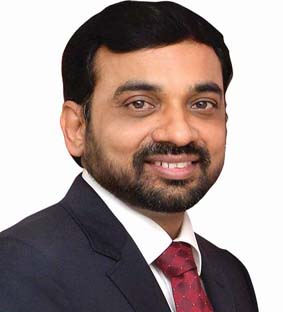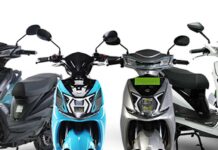
The unprecedented crisis has made people realise the importance of using zero-emission vehicles thereby opening an opportunity to accelerate the transition towards sustainable mobility, according to Mr. Mahesh Babu, MD & CEO, Mahindra Electric Mobility Limited. Answering an Autoguide questionnaire on electric mobility, Mr Babu said there also was an opportunity to build EV components indigenously going by the growth potential of e-2Ws & 3Ws.
The following is the text of the Q&A:
With the auto sector having stabilised to a great extent, do you think the electric mobility is getting the desired attention now?
During this pandemic, we have seen a decline in public-transit ridership by over 70 per cent and the virus has also adversely affected fleet and shared mobility operations. However, as things open up, we have seen a gradual increase in demand for local mobility for short-distance travel. We expect the demand for electric three/two-wheelers to go up. The demand for our Mahindra Treo electric auto has picked up and is about 70-80 pc of pre-COVID levels. We also believe that micro-mobility solutions and other technologies that support physical distancing may benefit. Customer demand for these solutions could soar once the crisis subsides, increasing their attractiveness to investors. As India continues to urbanise and the demand for last and first-mile connectivity increases, its EV revolution will be led by electric three-wheelers.
How do you rate the overall progress in the EV ecosystem?
The Indian EV story is very different from many other global countries. In India, two and three-wheelers make about 80 pc of total vehicles sold every year. These are promising EV segments going forward and expected to account for over 4 million units in the next five to six years. Further, this gives an opportunity to build our own EV components indigenously, right from electric motors to battery packs and even power electronics. The EV value-chain itself is growing and is expected to reach $4.8 billion in 2025. Mahindra Electric is no longer just an EV manufacturer. We are a total EV technology solutions provider and working towards developing products for mass adoption.
We have started to see the success of our Treo range of electric three-wheelers across the country. Adoption in Tier-1 and Tier-2 cities is the maximum. The ease of driving an electric vehicle has opened up a whole new segment of women drivers, which has further given a big boost to the segment.
The Government is focused on ‘Atmanirbhar Bharat’ and the battery technology and raw material are mostly controlled by China. Do you think this will slow down or change the impetus on EVs?
We believe that India is on the path to become a global leader in development and manufacturing of electric vehicles. Various central and state EV policies such as FAME-II and Phased Manufacturing Programme will help us to reduce our import dependence and create a strong and robust domestic supply-chain which will further help in making EVs more affordable. We are proud to announce that our Treo range of electric three-wheelers is completely localised (except for the cell). We have our own components including the battery pack. Mahindra Electric is setting up a new manufacturing plant in Chakan and a global R&D centre for electric vehicle technology in Bengaluru. Our aim is to make EV technology in India for the world.
Has the pandemic impacted peoples’ preference for EVs in any way?
This unprecedented crisis has made people realise the importance of using zero-emission vehicles for the betterment of the planet. Going forward, we expect to see an increase in ridership of last/first-mile commute. At the same time, most of the logistics and e-commerce companies are looking to go green with their deliveries. We should look at this crisis as an opportunity to accelerate the transition toward sustainable mobility. Here’s a good chance to revive the economy with a greener mission.
Which segments is seeing the maximum EV penetration and what is the future of growth in EVs plying interstate or long-distance routes?
We believe that electric three-wheelers, two-wheelers and four-wheelers in fleet operations will drive the Indian EV market and are expected to reach almost 4 million units by 2025.
Are you satisfied with the steps taken by the Centre and various state governments to promote electric vehicles?
The Government has laid a strong foundation for EVs to succeed in India. FAME and various state EV policies have certainly helped to push the sales of EVs in the country. The Phased Manufacturing Programme has ensured scalability of local content in EVs in an ordered manner and has helped OEMs to become self-reliant.








